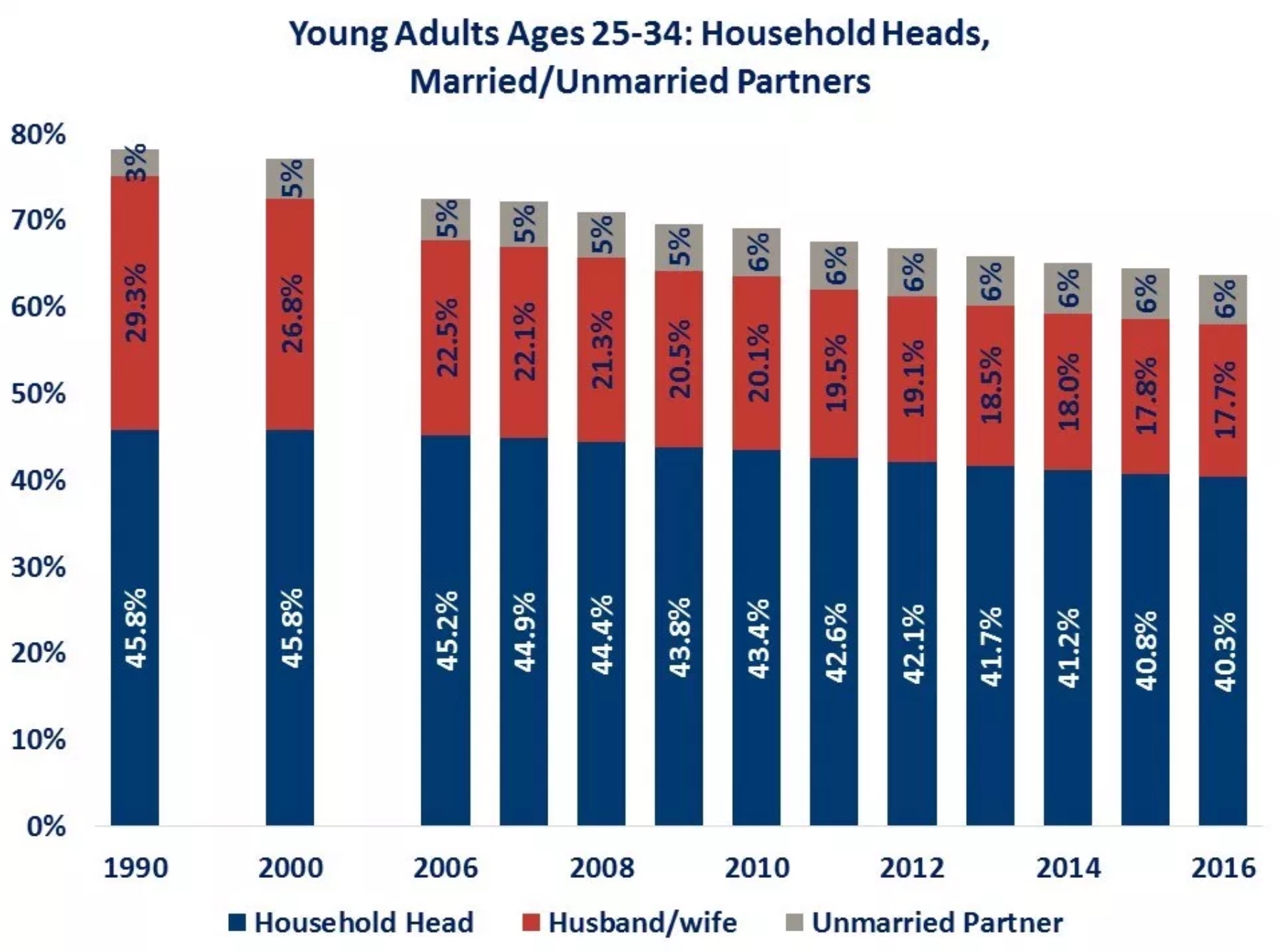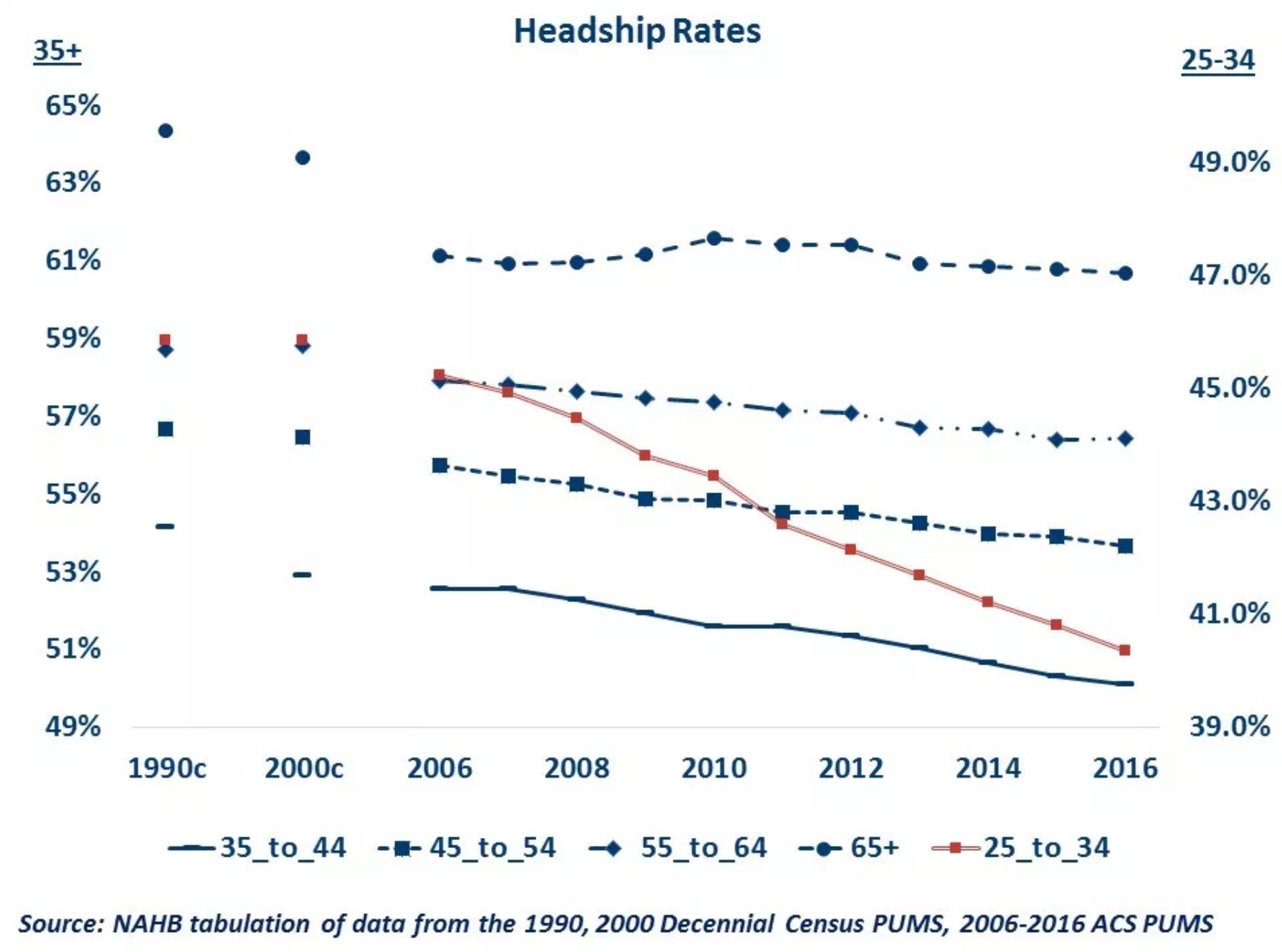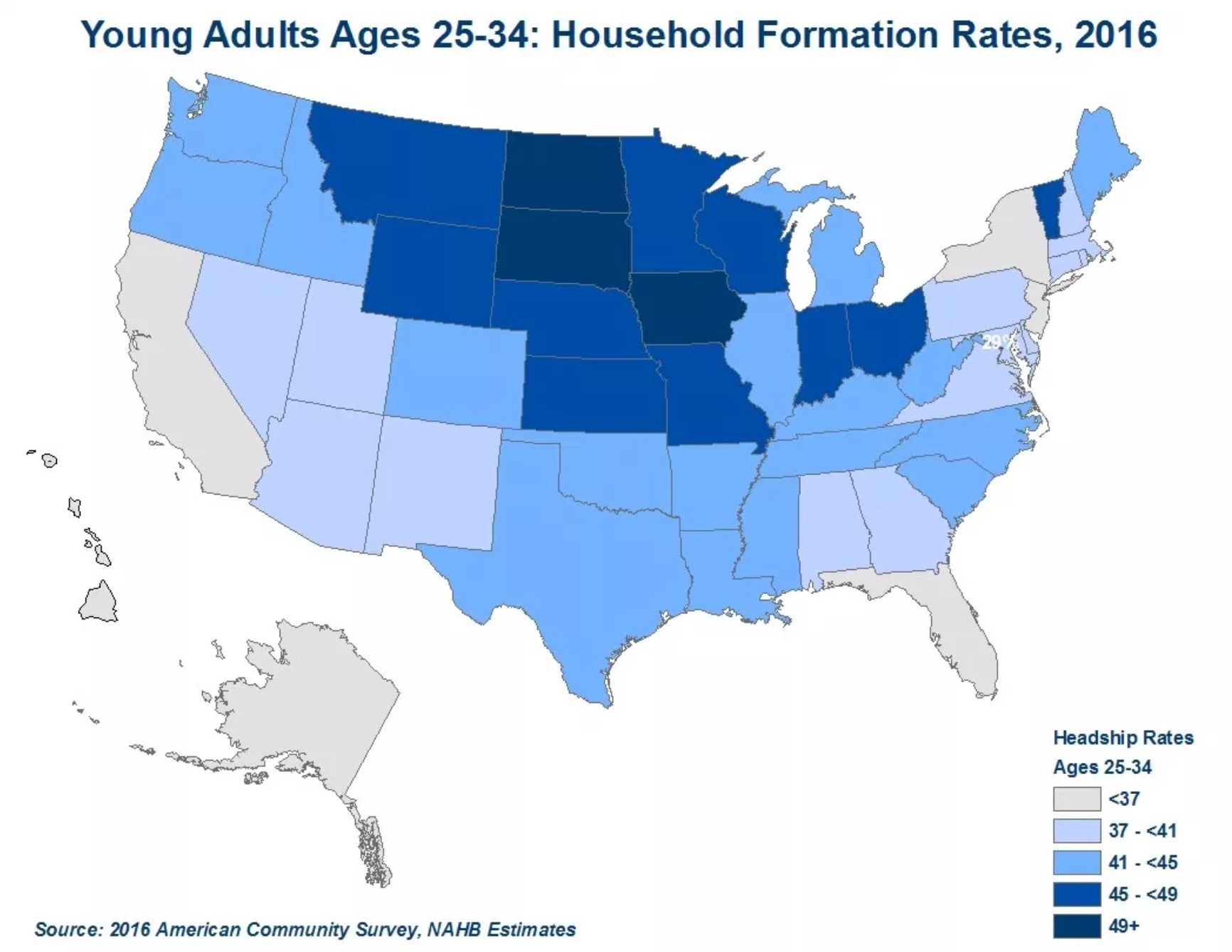Recently the National Association of Home Builders (NAHB) released a study, based on census data, showing an increasing percentage of young adults, about a third of those in the Millennial generation, living with parents, other relatives, or with unrelated house- or roommates. A second part of that study looks at the correlating rates of homeownership and where both those sharing living quarters and those aged 24 to 35 who have moved out on their own tend to be located.
NAHB's Natalia Siniavskaia says only 40 percent of those in that age group led their own households in 2016, the last year for which data is available, compared to 46 percent in both 1990 and 2000. As she pointed out in her previous post in NAHB's Eye on Housing blog, the percentage of young adults living with others remained relatively stable from 1990 to 2000 and even by 2006 had risen only slightly. Therefore, the rate of household formation can to see to behave in the reverse fashion.

There was a clear (and understandable) decline in headship (i.e. household formation) rates during the housing bust. But rather than increase with the recovery, the rate has continued to decline ever since. Now at 40 percent, it translates into 2.4 million households missing from what might have been had the young adult headship rates returned to the 46 percent rate of the two earlier periods.
Over the same years, the share of married partners co-leading independent households dropped from over 29% to under 18%. The rising numbers and shares of unmarried partners (from 3% in 1990 to 6% in 2016) were not enough to compensate for the steeper decline in married partnerships.
Siniavskaia says there isn't a lot of evidence to support that theory that Millennials are merely postponing the typical household forming behavior of earlier generations and that what previously happened to those in their late 20s will happen in their mid-to-late 30s. As of 2016, the household formation rates for the next oldest age cohort, those 35 to 44 have continued to decline as well. In fact, that decline is seen across all age groups when compared to 2000 but it is most pronounced among Millennials, "and they remain accountable for the largest number of households that never formed."

While the 40 percent national headship rates among young adults is considered low, states with either the least affordable homes or with the largest populations of Millennials have even lower rates. In California and New Jersey, the states with the least affordable housing markets only one out of three 25-34-year olds head their own household. Only Hawaii with its very expensive housing market has a lower rate, 29%.
At the opposite end of the spectrum are states in the Census Bureau's West North Central division. North Dakota, known for the oil booming economy and Iowa recognized for its affordable housing markets, are the only two states where more than half of 25-34-year olds lead their own household. Neighboring South Dakota, Nebraska and Kansas register similarly high headship rates in the 48-49% range.
Those states with the lowest headship rates quite naturally have the highest rates of young adults living with parents or in-laws. In Hawaii it is 30 percent, in New York 29 percent. California, Florida, and New York have rates of 26 to 27 percent. These percentages do not include those in the 25 to 34 age group living with other relatives or roommates. Thus the map below indicates both the states with the lowest headship and the highest home-sharing rates.








